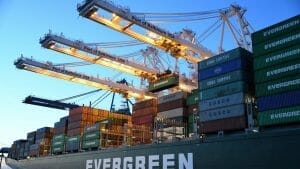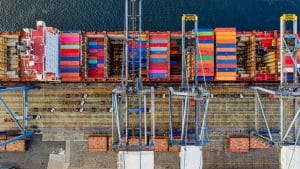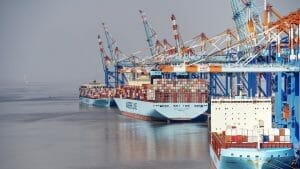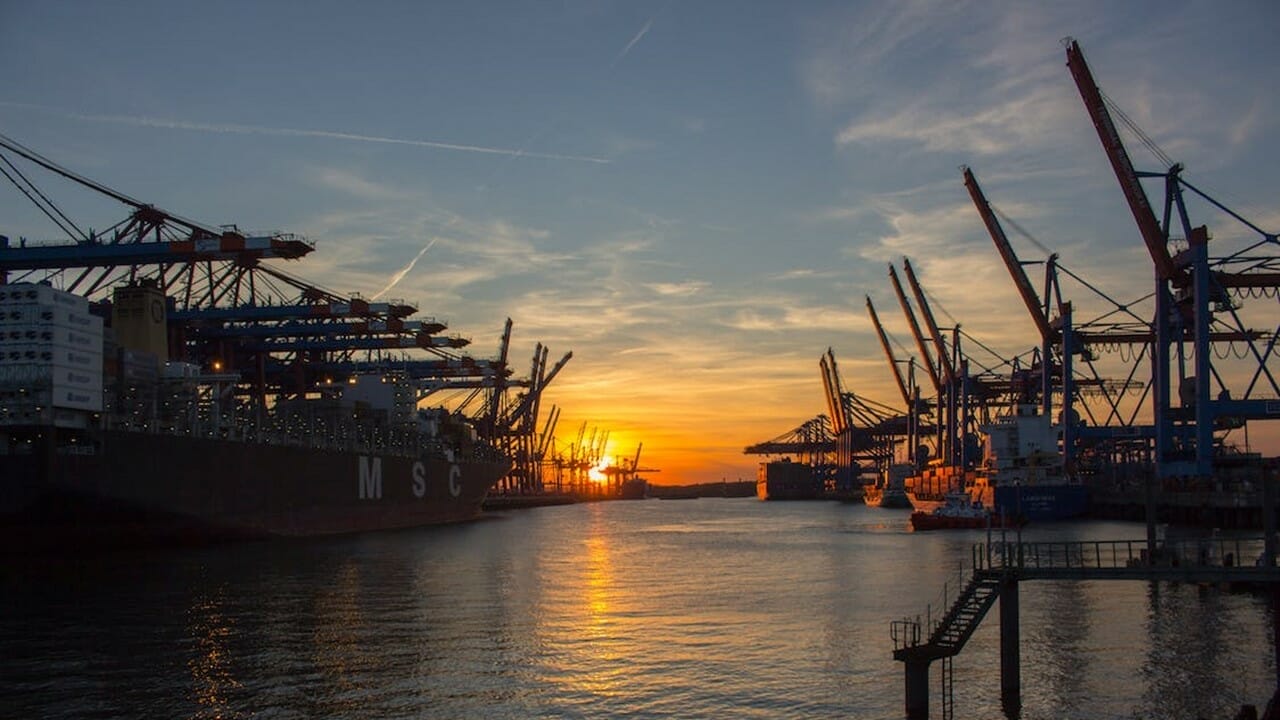Table of Contents
Ports are the bustling gateways through which goods of all kinds flow in and out, connecting countries, continents, and economies. From massive cargo ships to bustling warehouses and efficient transportation networks, ports are the lifeblood of global trade. While their significance is undeniable, have you ever wondered how these colossal infrastructures actually make money? Beyond their role as intermediaries in the exchange of goods, ports employ a range of strategies to generate revenue and thrive in the competitive world of logistics. In this article, we will delve into the fascinating world of port economics and explore the various ways in which these vital hubs monetize their operations.
The importance of ports in global trade
Ports are the unseen lifelines in the global trade network, playing a crucial role in facilitating the movement of goods across oceans and continents. They serve as hubs where ships from different countries converge, enabling cargo to be loaded and unloaded efficiently. Without ports, international trade would come grinding to a halt, causing severe disruptions to supply chains worldwide.
One of the key reasons why ports are so vital for global trade is their ability to handle large volumes of cargo. As globalization has led to exponential growth in international trade over the years, ports have become increasingly important for managing this surge in freight traffic. Ports with advanced infrastructure and deep water channels can accommodate bigger vessels carrying even larger quantities of goods. This capacity allows for economies of scale and drives down transportation costs, making it more cost-effective for businesses to engage in international trade.
Moreover, ports contribute significantly to local economies by generating employment opportunities and attracting foreign direct investment. A thriving port supports numerous ancillary industries such as logistics companies, warehouse operators, and shipping agents that provide essential services within its vicinity. The establishment of industrial zones and free-trade zones around ports further enhances economic activity by encouraging manufacturing and export-oriented industries to set up their operations nearby. Overall, the presence of a port brings greater prosperity not only at a national level but also at regional and local levels by stimulating business growth and creating jobs.
Ports are integral components of global trade networks that keep our modern economies connected like interlocking puzzle pieces.

Types of revenue streams for ports
One type of revenue stream for ports is through cargo handling fees. Ports charge a fee to shipping companies for the use of their facilities and equipment to load and unload cargo. This fee is typically based on the weight or volume of the cargo, providing a steady source of income for ports.
Another revenue stream for ports is through leases and rentals. Ports often have vast amounts of land and warehouses that they lease or rent out to various businesses and industries. For example, a port may lease land to a manufacturing company that needs space for storage or production facilities, generating additional income.
Additionally, some ports generate revenue through cruise ship tourism. Cruise lines pay docking fees to ports when their ships visit, bringing in thousands of passengers who spend money on shopping, dining, and excursions at the port. These fees can be substantial and contribute significantly to the overall revenue generated by the port.
Overall, ports have diverse revenue streams that go beyond just cargo handling fees. By leveraging their assets such as land and facilities, as well as capitalizing on tourism opportunities with cruise ship traffic, ports can create multiple sources of income that ensure financial stability and growth in an ever-evolving industry.
Cargo handling fees and tariffs
Cargo handling fees and tariffs play a vital role in generating revenue for ports worldwide. These charges are imposed on goods that pass through the port facilities, including loading and unloading, storage, inspection, and documentation. While some may see these fees as an unnecessary burden on trade, they are actually crucial for maintaining a high standard of service at ports.
One interesting aspect of cargo handling fees is their variability. Ports often charge different rates based on factors such as the type of cargo being handled, its weight or volume, and even the time of day or year. This pricing strategy allows ports to maximize their revenue while incentivizing certain types of cargo that may be more profitable.
Tariffs, on the other hand, are government-imposed charges on imported or exported goods passing through a port. These fees are primarily designed to protect domestic industries by discouraging foreign competition. Tariffs can play a significant role in shaping trade patterns and even global economics. Understanding how tariffs impact cargo handling is essential not only for port authorities but also for importers and exporters who have to factor these costs into their supply chain management strategies.
Cargo handling fees and tariffs provide an important source of income for ports while ensuring efficient operations and safeguarding local industries against international competition. The nuances in pricing between different types of cargo highlight the strategic considerations made by port authorities to optimize revenue generation. Moreover, understanding tariffs can help businesses make informed decisions when planning their logistics operations.

Leasing and rental income from port facilities
One lucrative source of income for ports is through leasing and rental agreements for port facilities. Ports often have a range of land, buildings, and equipment that can be leased to various parties such as shipping companies, logistics providers, or even recreational businesses. These leases can generate substantial revenue for ports, especially if they are strategically located and have well-maintained infrastructure.
Leasing port facilities provide ports with a steady stream of income that is not solely dependent on the shipping industry’s fluctuations. Even during times when shipping volumes may be low, lease agreements can help sustain the financial health of ports. Additionally, leasing offers flexibility by allowing tenants to customize their rented space according to their specific needs. This can attract more businesses to the port and foster economic growth in the surrounding area.
Cleverly utilizing available resources can maximize the potential for rental income at ports. For example, unused land within port premises could be transformed into warehousing or industrial park spaces available for long-term rent or short-term events like exhibitions or trade shows. By diversifying their rental offerings beyond traditional maritime-related services, ports can tap into new markets and further boost their revenue streams while strengthening their role as economic hubs in their respective regions.
Ancillary services offered by ports
In addition to their primary function as a gateway for shipping and receiving goods, ports often offer a range of ancillary services that contribute significantly to their revenue streams. One such service is ship repair and maintenance. Ports with the necessary infrastructure and expertise can provide essential maintenance and repair services to ships, including everything from routine inspections to major overhauls. By offering these services, ports not only generate additional income but also promote themselves as comprehensive maritime hubs capable of meeting all the needs of ship owners and operators.
Another ancillary service offered by ports is warehousing and storage facilities. These facilities play a crucial role in supporting the logistical operations of businesses by providing secure spaces for storing imported or exported goods. With efficient inventory management practices, ports can optimize these spaces and offer flexible storage solutions to businesses of all sizes. This service diversifies port revenue streams beyond just handling fees, allowing them to tap into the growing demand for storage space in local markets while also attracting international companies looking for reliable warehousing options.
Furthermore, some ports have expanded their offerings to include value-added services such as packaging, labeling, and customization. These additional services are appealing to businesses looking for streamlined supply chain solutions that go beyond traditional port functions. By leveraging their existing infrastructure and equipment, forward-thinking ports are tapping into new markets while further solidifying their position as vital facilitators of global trade.
Moreover, tugging and barge services have also become increasingly important in the port industry. These services provide efficient and cost-effective transportation options for goods, especially when it comes to bulk cargo or shipping between ports that are not easily accessible by larger vessels.
Tugging and barge services offer flexibility and convenience, allowing businesses to transport their goods smoothly and efficiently from port to port. This mode of transportation has gained popularity due to its ability to navigate shallow waters, narrow channels, and smaller harbors.
Overall, ancillary services offered by ports play an integral role in diversifying revenue streams while contributing to the overall efficiency and effectiveness of global trade operations.

Government funding and subsidies for ports
Government funding and subsidies play a crucial role in the success and development of ports worldwide. These financial injections serve multiple purposes, from improving infrastructure to expanding port capacities, ultimately enabling them to support global trade and economic growth. Ports often require substantial investments to keep up with increasing demands, such as accommodating larger vessels or implementing state-of-the-art technology for efficient operations.
One significant aspect of government funding is its contribution towards enhancing port security measures. In an era marked by rising concerns over national security, ensuring the safety of maritime transportation has become a top priority for governments across the globe. Subsidies enable ports to invest in advanced surveillance systems, access control technologies, and personnel training programs aimed at preventing unlawful activities including terrorism, smuggling, and trafficking.
Moreover, government funding also supports environmental initiatives within ports’ operations. With sustainability becoming an ever-important theme globally, governments provide financial incentives for ports to adopt eco-friendly practices such as reducing emissions through alternative energy sources or implementing waste management strategies that prioritize recycling and reduced carbon footprints. As awareness about climate change grows stronger, the allocation of funds towards green port projects is becoming more prevalent – promoting both environmental responsibility and economic benefits for these vital transport hubs.
Government funding and subsidies act as key catalysts in shaping the growth trajectory of ports by ensuring their competitiveness on various fronts – such as infrastructure development, security enhancements, and environmental initiatives.
Takeaway: The diverse sources of revenue for ports
In conclusion, ports have a wide range of sources to generate revenue, which ensures their financial sustainability and growth. While the traditional income streams such as cargo handling fees and vessel dues remain crucial, port authorities are also exploring innovative avenues to maximize profits. One such example is the development of real estate within port premises, leasing out land or properties for commercial use. By tapping into this potential, ports can benefit from a steady rental income while attracting businesses that can contribute to the local economy.
Furthermore, many ports have started diversifying their operations beyond simply being a transshipment hub. This involves investing in industries like manufacturing and logistics to capitalize on the advantages offered by port locations. Creating industrial clusters allows them to attract large-scale investors who require efficient transportation infrastructure and access to global markets. With these ventures come additional revenue streams in the form of leasing space and providing value-added services.
Additionally, some forward-thinking ports have recognized the potential of eco-tourism as an untapped source of income generation. By promoting their natural landscapes and cultural heritage sites within or near port areas, they can attract tourists looking for unique experiences while contributing to local economies through tourism-related activities.
In summary, ports today are not solely dependent on traditional sources of revenue but are venturing into various sectors to ensure stability and growth.










